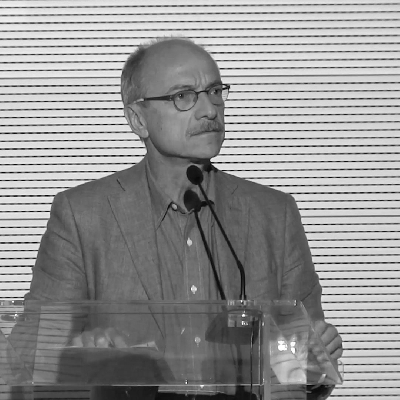The sea is obviously connected to circularity because it is an essential element of certain fundamental cycles, from that of water to that of coal. However, this is a technical aspect which recalls age-old knowledge, like that of the medieval schoolmen regarding evaporation or the very modern studies into mechanisms, for example, which so far have allowed for the absorption of around half of carbon dioxide emissions, and are now declining due to climate change.
But another aspect of the sea-circularity relationship produces a more immediate, more all-embracing emotional impact. Just step onto a beach or take a swim and you will directly experience the invasion of something which is not very circular at all – unwanted objects instead of fish, waste which we thought we had gotten rid of with a hurried, distracted gesture and which returns arrogantly before our eyes. Plastic is the number one culprit.
In April 2017, on the La Stampa, Mario Tozzi reminded us of the five garbage vortices, each the size of a continent, which contain 7 billion tonnes of plastic apiece: “In the Pacific ocean, on Kamilo Beach (Hawaii), there are now more fragments of plastic than grains of sand. Most of these come from shopping bags, which we make 500 billion of a year (and which did not even exist in 1970). These make up around 40% of marine litter in the Mediterranean.”
These rivers of plastic fragment progressively mixing with sea creatures and getting eaten by fish and turtles that take them for jellyfish and end up suffocating. There are now 7 waste items for every metre of beach, as shown in the Beach Litter 2017 investigation, carried out by Legambiente this year in April and May in 62 points along the Italian coast. Over 80% of this waste is plastic: pieces of netting, bottle tops, bottles and containers, disposable tableware, bags.
How can we contain the marine litter phenomenon which is costing the European Union €477 million a year? There are various options and they are not alternatives. An immediate possibility would be an emergency intervention like that proposed by Castalia, the consortium working in collaboration with the Ministry of the Environment to launch the Sea Sweeper project: a system of fixed nylon nets, which do not impact marine life, to intercept the floating plastic carried by rivers (80% of it ends up in the sea).
Then there are best practices like compostable plastic carrier bags which are at the heart of a legal battle, as the campaign #unsaccogiusto (the right bag) – endorsed by Gomorra actor Fortunato Cerlino, alias the boss Pietro Savastano – underlined, launching the alarm against imitation bags. These imitations have led to a net economic loss for the legal compostable bag industry equal to €160 million, in addition to the €30 million lost from tax evasion which damages the whole community.
However, the different elements of the proposal must then be put together, in an attempt to define the outlines of a new economy based on sustainable business and the use of biological materials which are continuously recovered, instead of disposable items fuelled by oil wells and mines. That is what two events, which we will consider over the coming pages, tried to do. The first is the UN conference on oceans which took place in June. The second is BlueMed, which aims to release the Mediterranean’s potential to improve its environmental quality. The European Union is moving in the same direction with its new regulations on fish labelling described in the piece by Renata Briano on small-scale traditional fishing which respects the biological rhythms of the sea.
#unsaccogiusto, video www.youtube.com/watch?v=Y37vj28p53A



